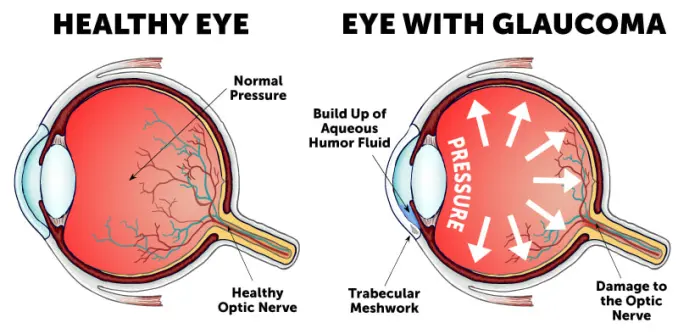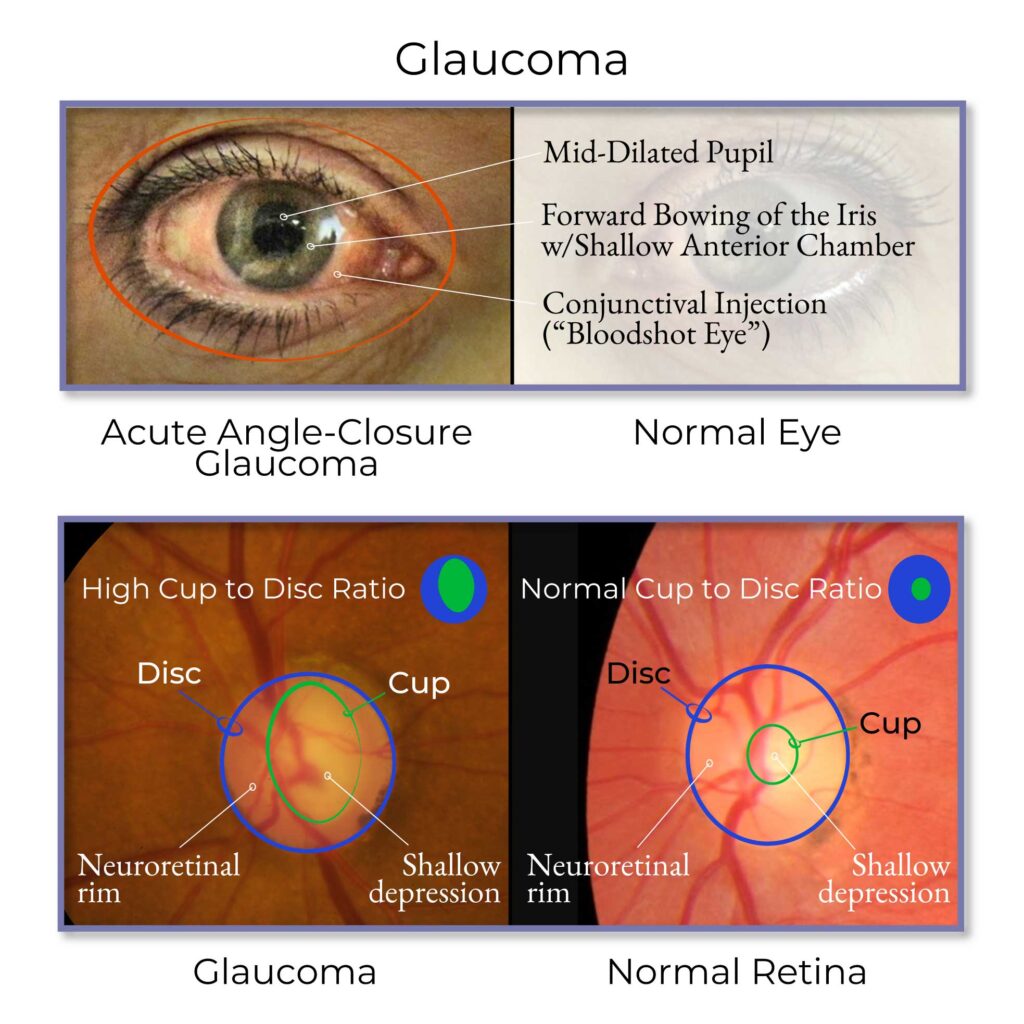Glaucoma Services
Glaucoma is a progressive optic neuropathy characterized by irreversible damage to the optic nerve, often associated with elevated intraocular pressure (IOP). It is one of the leading causes of blindness worldwide and is typically asymptomatic in its early stages, earning it the moniker “the silent thief of sight.



Types of Glaucoma
1. Primary Open-Angle Glaucoma (POAG): The most common form, characterized by a gradual increase in IOP due to impaired aqueous humor drainage through the trabecular meshwork.
2. Angle-Closure Glaucoma: A less common but more severe form caused by sudden blockage of the drainage angle, leading to a rapid increase in IOP.
3. Normal-Tension Glaucoma: Occurs despite normal IOP levels, indicating other risk factors contribute to optic nerve damage.
4. Secondary Glaucoma: Develops as a result of trauma, inflammation, or medication-induced changes affecting IOP regulation.
5. Congenital Glaucoma: A rare condition present at birth due to abnormal development of the eye’s drainage system.
Risk Factors:
– Increased intraocular pressure
– Family history of glaucoma
– Age > 40 years
– African, Hispanic, or Asian descent
– Myopia or hyperopia
– Diabetes and hypertension
– Prolonged corticosteroid use
Symptoms:
Glaucoma remains asymptomatic in early stages. As it progresses, patients may experience:
– Peripheral vision loss (tunnel vision)
– Blurred vision
– Halos around lights
– Eye pain and redness (in acute cases)
Diagnosis
Early detection is crucial. Diagnostic evaluations include:
– Tonometry: Measures IOP.
– Gonioscopy: Assesses drainage angles.
– Ophthalmoscopy: Examines optic nerve damage.
– Perimetry (Visual Field Test): Detects peripheral vision loss.
– Optical Coherence Tomography (OCT): Evaluates optic nerve and retinal nerve fiber thickness.
Treatment Options:
– Medications: Topical eye drops (prostaglandin analogs, beta-blockers, carbonic anhydrase inhibitors) to lower IOP.
– Laser Therapy:
– Trabeculoplasty for POAG
– Iridotomy for angle-closure glaucoma
– Surgical Interventions:
– Trabeculectomy: Creates a new drainage pathway.
– Glaucoma Drainage Implants: Enhances aqueous humor outflow.
– Minimally Invasive Glaucoma Surgery (MIGS): A safer, less invasive option.
